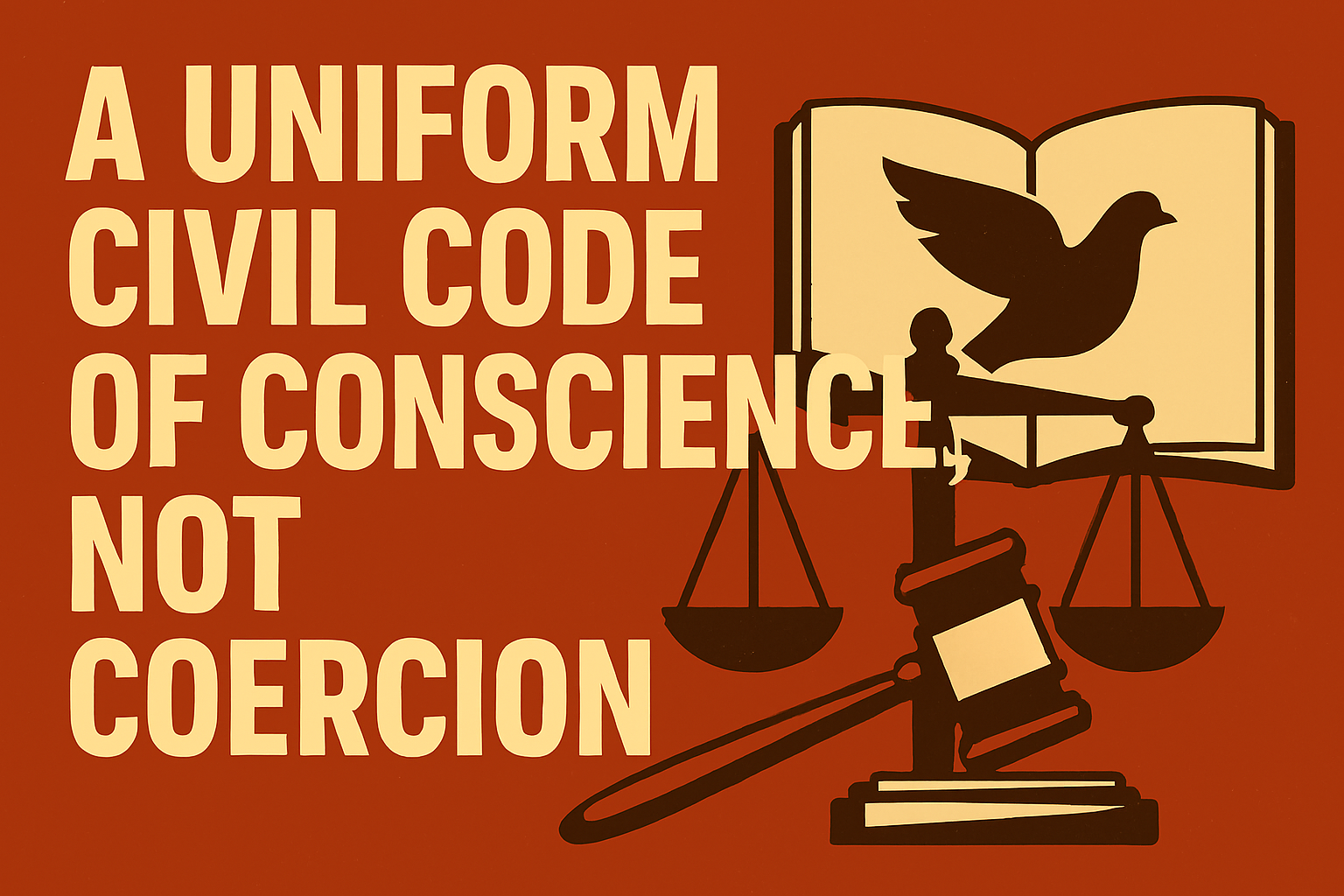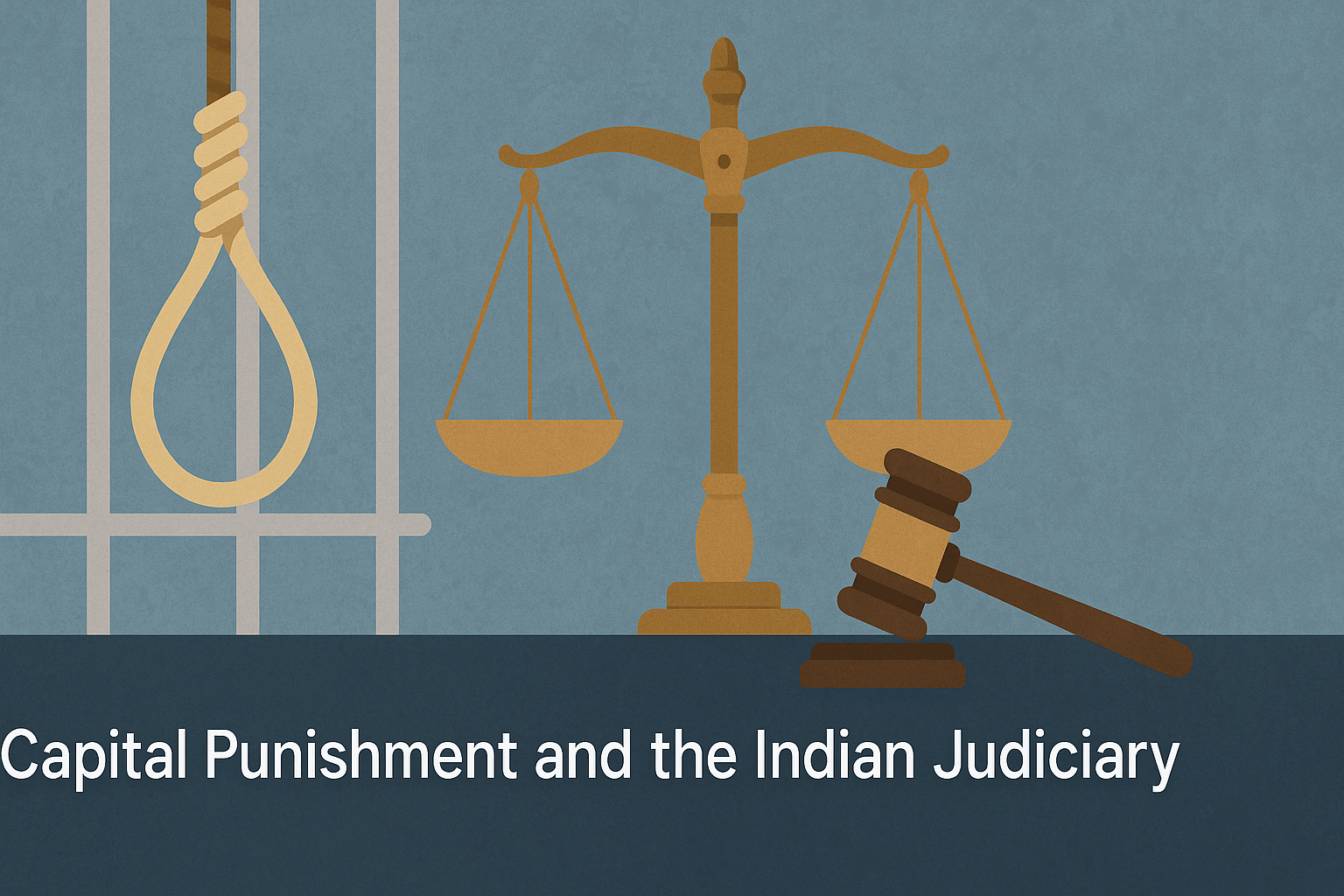



Author: Piyali Sarkar
Institution: Sister Nivedita University
Capital punishment refers to the execution of an individual by the state as a penalty for a crime. The Bharatiya Nyaya Sanhita, 2023 (BNS), which replaced the Indian Penal Code, prescribes the death penalty for several offenses, including murder (Section 103), waging war against the government of India (Section 147), and certain acts of terrorism under special laws.
India has retained the death penalty but claims to apply it in the “rarest of rare” cases, which is a doctrine evolved to limit its use and protect the right to life under Article 21 of the Constitution of India.
This tension between societal demands for retribution and the constitutional ethos of dignity, fairness, and reform forms the heart of India’s capital punishment debate.
During British rule, the death penalty was a routine punishment in India, with little judicial discretion. After independence in 1947, the Constituent Assembly debated but did not abolish it. The first Law Commission of India, in its 35th Report (1967), recommended its retention, noting the country’s social conditions and the deterrent effect of the punishment.
Over the years, however, the Indian judiciary began questioning the unbridled use of the death penalty and sought to reconcile it with the constitutional guarantee of the right to life.
A turning point came in Bachan Singh v. State of Punjab (1980), where the Supreme Court upheld the constitutionality of the death penalty but laid down the “rarest of rare” doctrine. The Court held that capital punishment should only be imposed in cases where the alternative of life imprisonment is “unquestionably foreclosed.” Judges must consider both the aggravating and mitigating circumstances, giving due weight to the possibility of reforming the convict.
Later, in Machhi Singh v. State of Punjab (1983), the Court elaborated on this doctrine, listing factors such as the manner of commission, motive, magnitude of crime, and personality of the victim and offender.
Despite this doctrine, critics argue that the standard is inherently subjective and has led to inconsistent application across cases.
Retribution vs. Reform: Philosophical Underpinnings
At the heart of the debate lies a philosophical question: Should punishment aim to avenge wrongs (retribution), deter future crimes (deterrence), or reform the offender (reformation)?
Those favoring capital punishment often invoke retribution with the belief that justice demands that heinous offenders pay the ultimate price. There is also the argument of deterrence: that the fear of death dissuades others from committing similar crimes.
However, opponents argue that retribution is morally indefensible in a modern state, and empirical evidence does not conclusively show that the death penalty deters crime more effectively than life imprisonment. Reformists contend that even the most hardened criminals can change, and the state has an obligation to respect human dignity.
The Indian judiciary, while acknowledging retributive and deterrent aspects, has increasingly emphasized the reformative approach, especially in recent years.
Psychological Impact of Death Row
Life on death row is often described as a punishment beyond the sentence itself. The psychological toll of waiting for execution, sometimes for years, can amount to what courts and scholars have termed the “death row phenomenon.” Studies, including the Death Penalty India Report (2016), show that death row inmates experience intense anxiety, depression, insomnia, and suicidal tendencies due to prolonged uncertainty and isolation.
The Supreme Court in Shatrughan Chauhan v. Union of India (2014) recognized that prolonged delays in deciding mercy petitions subject convicts to inhuman and degrading treatment, justifying commutation. Furthermore, harsh prison conditions, solitary confinement, and lack of mental health care exacerbate their suffering. Protecting the mental health and dignity of prisoners, even those sentenced to death, is essential to uphold constitutional principles under Article 21. Addressing the psychological dimensions of capital punishment strengthens arguments for reform or abolition and underscores the ethical dilemma of imposing such irreversible and tormenting sentences.
In recent decades, the Indian Supreme Court has shown a marked inclination toward sparing the death penalty. In Santosh Kumar Satishbhushan Bariyar v. State of Maharashtra (2009), the Court criticized the inconsistent application of the “rarest of rare” doctrine and stressed the importance of considering the possibility of reform.
In Shatrughan Chauhan v. Union of India (2014), the Court commuted the death sentences of several convicts citing delays in the disposal of mercy petitions as a ground for converting death into life imprisonment and recognized the mental agony suffered during prolonged incarceration as cruel and inhuman.
Moreover, in Mithu v. State of Punjab (1983), the Court struck down mandatory death penalties (then under Section 303 IPC) as unconstitutional, affirming judicial discretion and the need for individualized sentencing. The BNS does not retain a mandatory death penalty provision either, reflecting this judicial guidance.
Yet, despite these progressive judgments, the death penalty continues to be awarded, for example, in cases of brutal rapes and murders, such as the 2012 Delhi gang rape case, i.e., Mukesh & Anr v. State for NCT of Delhi, 2017, where the convicts were executed in 2020.
Article 72 and Article 161 of the Indian Constitution empower the President and Governors, respectively, to grant pardons, reprieves, and commutations. This mercy jurisdiction serves as a final safeguard against arbitrary or wrongful executions.
However, delays in processing mercy petitions have themselves been criticized as cruel, and in several cases, such as V. Sriharan @ Murugan & Ors v. Union of India (2015), the Supreme Court has allowed commutation on account of inordinate delays. While the mercy power acts as a check on judicial fallibility, it has also been accused of being influenced by political considerations rather than purely legal or humanitarian ones.
The death penalty has been widely criticized under international human rights law as a cruel, inhuman, and degrading punishment. Instruments like the International Covenant on Civil and Political Rights (ICCPR) permit the death penalty only for the “most serious crimes” and under strict procedural safeguards. The Second Optional Protocol to the ICCPR, aimed at abolishing the death penalty, has been ratified by over 90 countries.
However, India maintains that it retains the right to impose the death penalty in rare cases, citing national circumstances and security concerns. UN bodies have repeatedly urged India to impose a moratorium and move toward abolition, especially after high-profile executions. While India remains formally compliant with minimum guarantees under Article 6 of the ICCPR, concerns remain over its inconsistent application, inadequate legal aid, and socio-economic biases. Aligning domestic law more closely with evolving international standards could strengthen India’s commitment to human dignity and its global human rights image.
Globally, more than 140 countries have abolished the death penalty in law or practice, recognizing it as cruel, irreversible, and ineffective as a deterrent. India, however, has consistently voted against UN resolutions calling for a moratorium on the death penalty, citing its sovereign right to determine its criminal justice policies.
Several Law Commission reports, including the 262nd Report (2015), have recommended abolition of the death penalty for all crimes except terrorism-related offenses and waging war against the state, reasoning that the punishment is flawed in principle and practice.
However, public opinion in India remains largely supportive of the death penalty, especially in cases involving sexual violence and terrorism, which makes legislative abolition politically difficult.
Alternatives to the Death Penalty
Globally and in India, alternatives to the death penalty have gained traction as more humane and effective forms of punishment. Life imprisonment without the possibility of remission is often cited as a severe yet reversible alternative that addresses public concerns about deterrence while avoiding the moral and legal pitfalls of execution. In India, the Supreme Court in Union of India v. V. Sriharan (2015) upheld the validity of life sentences beyond 14 years without remission in certain cases. Such sentences ensure that offenders remain confined for the rest of their lives if necessary, offering a middle ground between retribution and reform. Moreover, restorative justice approaches that focus on rehabilitation and reconciliation with victims’ families are being explored worldwide as alternatives that center human dignity.
Strengthening the prison system, improving rehabilitation programs, and enhancing victim compensation mechanisms are essential to making these alternatives credible and effective. A shift toward such measures reflects a more progressive and constitutional approach to justice.
The Indian judiciary has made significant strides in narrowing the scope of capital punishment and emphasizing human dignity and the possibility of reform. Yet, the inconsistency in its application and the continued executions demonstrate that the ideal of a reformatory justice system is far from realized.
Balancing retribution and reform remains a delicate task. While the state has a duty to uphold justice and protect society, it must also ensure that punishment serves as a means of rehabilitation and not mere vengeance. Moving forward, India must critically assess whether capital punishment aligns with its constitutional values and evolving standards of decency.
The debate is not just about law, but about the kind of society we aspire to be, that believes in second chances, or one that exacts the ultimate price in the name of justice.
References:
https://www.thelegalyoungster.com/legal-internship/